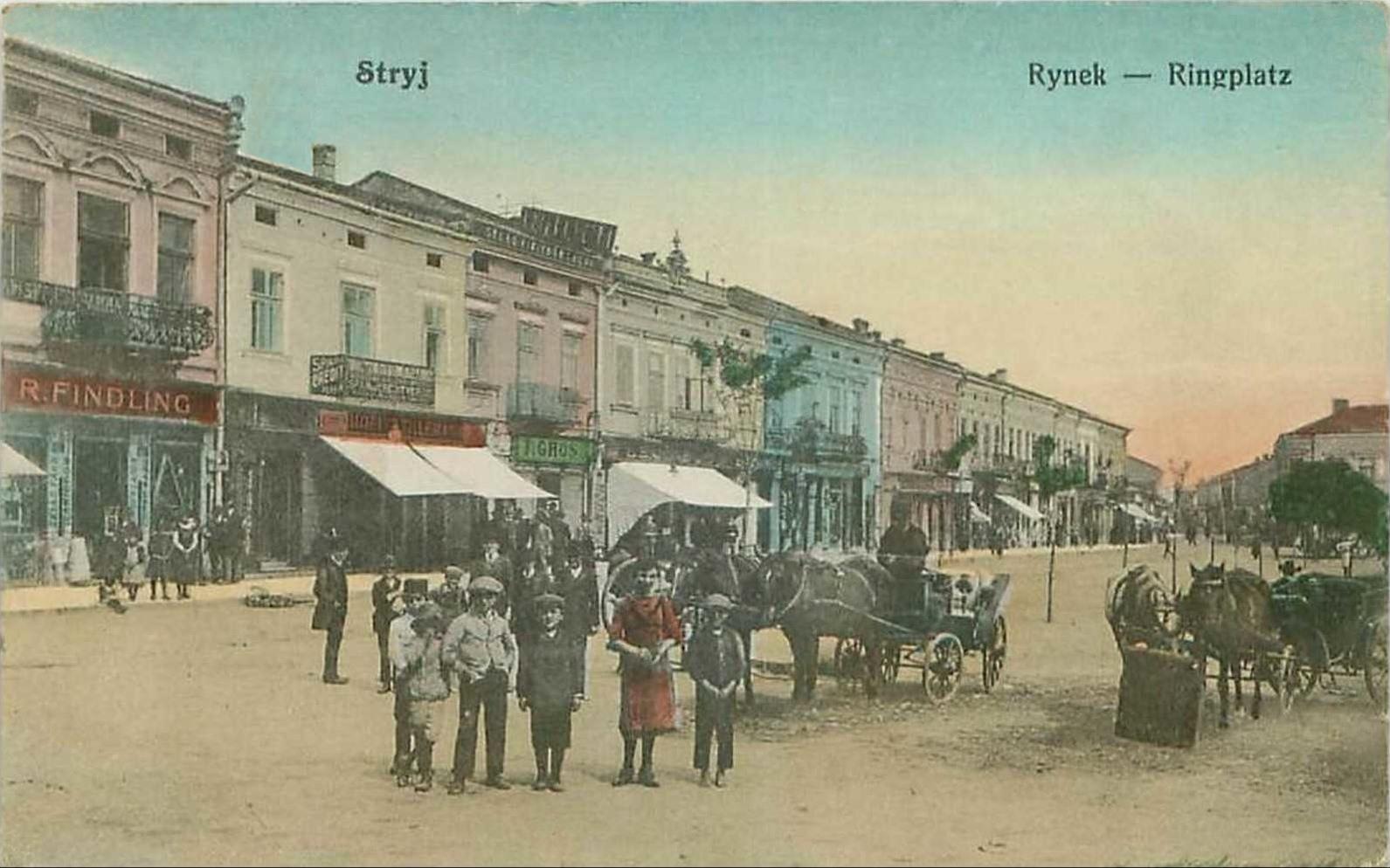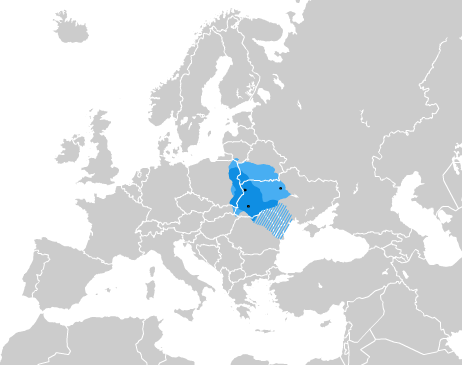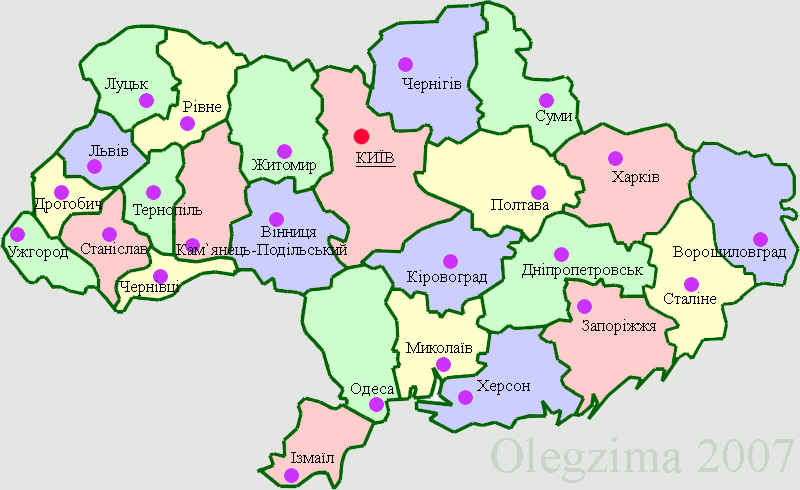|
Zavadiv (Stryi Raion)
Zavadiv ( uk, Зава́дів) – village ( selo) in the Stryi Raion, Lviv Oblast (province) of Western Ukraine. It belongs to Stryi urban hromada, one of the hromadas of Ukraine. The first written mention dates back to the year 1504. Local government is administered by Zavadivska village council. The population of the village is just about 1197 people. Geography The village Zavadiv is located in the Stryiskyi district (Stryi Raion) at a distance from the district center Stryi, from the regional center of Lviv and from the City of regional significance Drohobych. It is located near the village Holobutiv. Personalities and sights The village has of monumental art sights of local importance. * Taras Shevchenko monument (stone, 1914 – 1916) (N864). * Ostap Nyzhankivsky monument (marble chips, bronze, 1989) (N1719) * Ivan Franko monument (marble chips, bronze, 1989) (N1721) * Taras Shevchenko monument (marble chips, bronze, 1989) (N1723) Ostap Nyzhankivsky Ostap ... [...More Info...] [...Related Items...] OR: [Wikipedia] [Google] [Baidu] |
Village
A village is a clustered human settlement or community, larger than a hamlet but smaller than a town (although the word is often used to describe both hamlets and smaller towns), with a population typically ranging from a few hundred to a few thousand. Though villages are often located in rural areas, the term urban village is also applied to certain urban neighborhoods. Villages are normally permanent, with fixed dwellings; however, transient villages can occur. Further, the dwellings of a village are fairly close to one another, not scattered broadly over the landscape, as a dispersed settlement. In the past, villages were a usual form of community for societies that practice subsistence agriculture, and also for some non-agricultural societies. In Great Britain, a hamlet earned the right to be called a village when it built a church. [...More Info...] [...Related Items...] OR: [Wikipedia] [Google] [Baidu] |
Stryi Urban Hromada
Stryi ( uk, Стрий, ; pl, Stryj) is a city located on the left bank of the river Stryi in Lviv Oblast (region) of western Ukraine 65 km to the south of Lviv (in the foothills of the Carpathian Mountains). It serves as the administrative center of Stryi Raion (district). Stryi hosts the administration of Stryi urban hromada, one of the hromadas of Ukraine. Its population is approximately . Stryi is considered to be the first city in Ukraine to bear the blue-over-yellow Ukrainian national flag when it was hoisted on the flagpole of the Town Hall on March 14, 1990, even before the fall of the Soviet Union in December 1991. Population Name The city takes its name from the name of the river Stryi, one of the tributaries of the Dniester. Stryi, as a name of river is a very old name and means "stream". Its etymology stems from an Indo-European root *sreu. Words that have the same root can be found in modern Ukrainian - струм, струя, Polish - ''struga'', ''strumie� ... [...More Info...] [...Related Items...] OR: [Wikipedia] [Google] [Baidu] |
Ivan Franko
Ivan Yakovych Franko ( Ukrainian: Іван Якович Франко, pronounced ˈwɑn ˈjɑkowɪtʃ frɐnˈkɔ 27 August 1856 – 28 May 1916) was a Ukrainian poet, writer, social and literary critic, journalist, interpreter, economist, political activist, doctor of philosophy, ethnographer, and the author of the first detective novels and modern poetry in the Ukrainian language. He was a political radical, and a founder of the socialist and nationalist movement in western Ukraine. In addition to his own literary work, he also translated the works of such renowned figures as William Shakespeare, Lord Byron, Pedro Calderón de la Barca, Dante Alighieri, Victor Hugo, Adam Mickiewicz, Johann Wolfgang von Goethe and Friedrich Schiller into Ukrainian. His translations appeared on the stage of the Ruska Besida Theatre. Along with Taras Shevchenko, he has had a tremendous impact on modern literary and political thought in Ukraine. Life Franko was born in the Ukrainian villag ... [...More Info...] [...Related Items...] OR: [Wikipedia] [Google] [Baidu] |
Ostap Nyzhankivsky
Ostap Yosypovych Nyzhankivsky ( uk, Остап Йосипович Нижанківський and ); January 24, 1863 – May 22, 1919) – Ukrainian writer and cleric, a priest of the Ukrainian Greek Catholic Church, composer, conductor, and public figure. Life Ostap Nyzhankivsky born in the village of Mali Didushychi (today Stryi district of Lviv region) January 24, 1863. He was born in a large family of Greek Catholic priest of Joseph Nyzhankivsky (1836 - 1911), which was a priest of the Greek Catholic parish in the village Mali Didushychi. Then the family moved to the village Zavadiv. He studied in the nearby village Duliby and later he studied in Drohobych and Lviv gymnasium. Ostap Nyzhankivsky was expelled from the sixth grade of gymnasium and had to enter military service in the Austrian army in Lviv (1882-1885). Ostap has participated in the company “Academic Fraternity”, where he met Ivan Franko and with the composer, conductor and public figure Anatole ... [...More Info...] [...Related Items...] OR: [Wikipedia] [Google] [Baidu] |
Taras Shevchenko
Taras Hryhorovych Shevchenko ( uk, Тарас Григорович Шевченко , pronounced without the middle name; – ), also known as Kobzar Taras, or simply Kobzar (a kobzar is a bard in Ukrainian culture), was a Ukrainian poet, writer, artist, public and political figure, folklorist and ethnographer.Taras Shevchenko in the Great Soviet Encyclopedia, 3rd Edition. 1970-1979 (in English) His literary heritage is regarded to be the foundation of modern and, to a large extent, the modern , thou ... [...More Info...] [...Related Items...] OR: [Wikipedia] [Google] [Baidu] |
Holobutiv, Stryi Raion
Holobutiv () – village (''selo'') is located in Stryi Raion, Lviv Oblast, of Western Ukraine. It belongs to Stryi urban hromada, one of the hromadas of Ukraine. The population of the village is 921, and the local government is administered by the Holobutivska village council. The village is located to the side of the Stryi Road and Drohobych at a distance from the district center Stryi, from the regional center Lviv and from Drohobych Drohobych ( uk, Дрого́бич, ; pl, Drohobycz; yi, דראָהאָביטש;) is a city of regional significance in Lviv Oblast, Ukraine. It is the administrative center of Drohobych Raion and hosts the administration of Drohobych urban h .... The first record of the village dates back to the year 1664. References External links village HolobutivКультурна спадщина. 15. Городище, с. Голобутів.weather.in.ua Villages in Stryi Raion {{Lviv-geo-stub ... [...More Info...] [...Related Items...] OR: [Wikipedia] [Google] [Baidu] |
Drohobych
Drohobych ( uk, Дрого́бич, ; pl, Drohobycz; yi, דראָהאָביטש;) is a city of regional significance in Lviv Oblast, Ukraine. It is the administrative center of Drohobych Raion and hosts the administration of Drohobych urban hromada, one of the hromadas of Ukraine. In 1939–1941 and 1944–1959 it was the center of Drohobych Oblast. The city was founded at the end of eleventh century as an important trading post and transport node between Kyiv Rus' and the lands to the West of Rus'. After extinction of the local Ruthenian dynasty and subsequent incorporation of the Kingdom of Galicia–Volhynia into the Polish Kingdom by 1349, from the fifteenth century the city was developing as a mercantile and saltworks centre. Drohobych became part of the Habsburg Empire in 1772 after the first partition of Polish–Lithuanian Commonwealth. In the mid-nineteenth century it became Europe's largest oil extraction center, which significantly contributed to its rapid devel ... [...More Info...] [...Related Items...] OR: [Wikipedia] [Google] [Baidu] |
Lviv
Lviv ( uk, Львів) is the largest city in western Ukraine, and the seventh-largest in Ukraine, with a population of . It serves as the administrative centre of Lviv Oblast and Lviv Raion, and is one of the main cultural centres of Ukraine. It was named in honour of Leo, the eldest son of Daniel, King of Ruthenia. Lviv emerged as the centre of the historical regions of Red Ruthenia and Galicia in the 14th century, superseding Halych, Chełm, Belz and Przemyśl. It was the capital of the Kingdom of Galicia–Volhynia from 1272 to 1349, when it was conquered by King Casimir III the Great of Poland. From 1434, it was the regional capital of the Ruthenian Voivodeship in the Kingdom of Poland. In 1772, after the First Partition of Poland, the city became the capital of the Habsburg Kingdom of Galicia and Lodomeria. In 1918, for a short time, it was the capital of the West Ukrainian People's Republic. Between the wars, the city was the centre of the Lwów Voivodeshi ... [...More Info...] [...Related Items...] OR: [Wikipedia] [Google] [Baidu] |
Stryi
Stryi ( uk, Стрий, ; pl, Stryj) is a city located on the left bank of the river Stryi in Lviv Oblast (region) of western Ukraine 65 km to the south of Lviv (in the foothills of the Carpathian Mountains). It serves as the administrative center of Stryi Raion (district). Stryi hosts the administration of Stryi urban hromada, one of the hromadas of Ukraine. Its population is approximately . Stryi is considered to be the first city in Ukraine to bear the blue-over-yellow Ukrainian national flag when it was hoisted on the flagpole of the Town Hall on March 14, 1990, even before the fall of the Soviet Union in December 1991. Population Name The city takes its name from the name of the river Stryi, one of the tributaries of the Dniester. Stryi, as a name of river is a very old name and means "stream". Its etymology stems from an Indo-European root *sreu. Words that have the same root can be found in modern Ukrainian - струм, струя, Polish - ''struga'', ''strumi ... [...More Info...] [...Related Items...] OR: [Wikipedia] [Google] [Baidu] |
Hromada
A hromada ( uk, територіальна громада, lit=territorial community, translit=terytorialna hromada) is a basic unit of administrative division in Ukraine, similar to a municipality. It was established by the Government of Ukraine on 12 June 2020. Similar terms exist in Poland ('' gromada'') and in Belarus ('' hramada''). The literal translation of this term is " community", similarly to the terms used in western European states, such as Germany (''Gemeinde''), France ('' commune'') and Italy ('' comune''). History In history of Ukraine and Belarus, hromadas appeared first as village communities, which gathered their meetings for discussing and resolving current issues. In the 19th century, there were a number of political organizations of the same name, particularly in Belarus. Prior to 2020, the basic units of administrative division in Ukraine were rural councils, settlement councils and city councils, which were often referred to by the generic term ... [...More Info...] [...Related Items...] OR: [Wikipedia] [Google] [Baidu] |
Western Ukraine
Western Ukraine or West Ukraine ( uk, Західна Україна, Zakhidna Ukraina or , ) is the territory of Ukraine linked to the former Kingdom of Galicia–Volhynia, which was part of the Polish–Lithuanian Commonwealth, the Austrian Empire, Austria-Hungary and the Second Polish Republic, and came fully under the control of the Soviet Union (via the Ukrainian Soviet Socialist Republic) only in 1939, following the Molotov–Ribbentrop Pact. There is no universally accepted definition of the territory's boundaries (see the map, right), but the contemporary Ukrainian administrative regions or Oblasts of Chernivtsi, Ivano-Frankovsk, Lviv, Ternopil and Transcarpathia (which were part of the former Austro-Hungarian Empire) are nearly always included and the Lutsk and Rivne Oblasts (parts of the annexed from Poland during its Third Partition) are usually included. It is less common to include the Khmelnytski and, especially, the Vinnytsia and Zhytomyr Oblasts in ... [...More Info...] [...Related Items...] OR: [Wikipedia] [Google] [Baidu] |
Oblasts Of Ukraine
An oblast ( uk, о́бласть; ) in Ukraine, often called a region or province, is the main type of first-level administrative division of the country. Ukraine's territory is divided into 24 oblasts, as well as one autonomous republic, Crimea, and two cities with special status, Kyiv and Sevastopol. Ukraine is a unitary state, thus the oblasts do not have much legal scope of competence other than that which is established in the Ukrainian Constitution and by law. Articles 140–146 of Chapter XI of the constitution deal directly with local authorities and their competency. Oblasts are subdivided into raions (districts), each oblast having from 3 to 10 raions following the July 2020 reform. General characteristics In Ukraine, the term '' oblast'' denotes a primary administrative division. Under the Russian Empire and into the 1920s, Ukraine was divided between several governorates. The term ''oblast'' was introduced in 1932 by Soviet authorities when the Ukrainian SSR ... [...More Info...] [...Related Items...] OR: [Wikipedia] [Google] [Baidu] |








